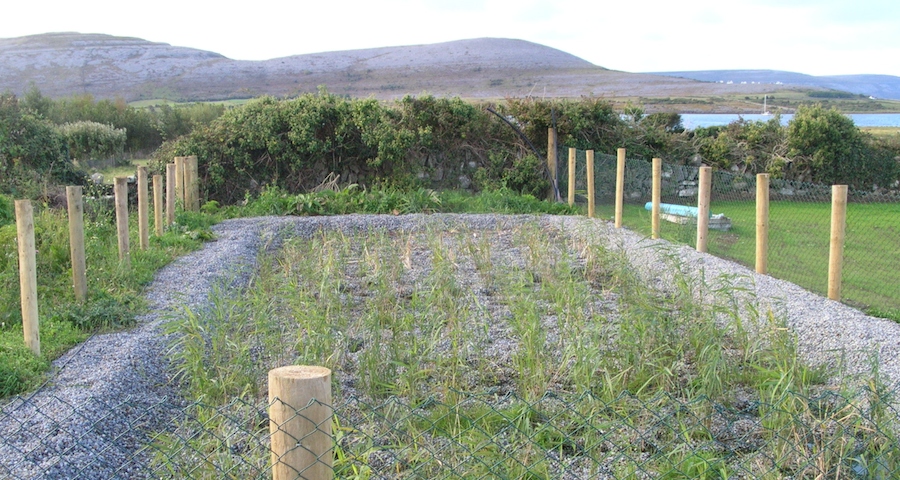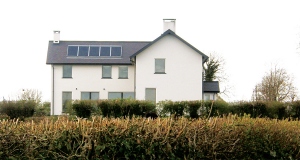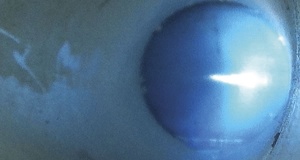
- Blogs
- Posted
A low energy, ecological approach to wastewater treatment
In this blog post, Féidhlim Harty of FH Wetland Systems, looks at the passive and eco-friendly home sewage treatments options for those building low energy and sustainable homes
Readers of Passive House + are well aware of the importance of keeping our carbon footprint to a minimum in our construction projects. Atmospheric carbon dioxide levels are currently too high to sustain a healthy planet for human activity into the future, and current projections are that this level should be reduced from the current levels of 400ppm to 350ppm as a minimum. To achieve this, our global energy consumption rates will need to drop by some 10% per annum. Not at some distant future point, but immediately. At international and national policy level, this is still far from being even an aspiration, so enthral are we to propping up GDP, but we can take some steps ourselves in the meantime to limit our own energy consumption.
If you are are a reader of Passive House + then you maybe well have done much to reduce the overall energy consumption of your house in terms of day to day heating requirements. But many people tend to forget about the electricity inputs required for sewage treatment. If you use a mechanical aeration system then this can consume as much as 20% of the carbon footprint involved in heating a conventional house in a year with oil. That's a significant carbon budget, and it may not be necessary if the site size, layout and falls are suitable for an alternative system.
Bear in mind that not all packaged sewage treatment systems have the same power requirements. Pump-fed media filter systems can use as little as €20/yr for a household, whereas pump-aerated systems vary from €70 to €275/annum, with a carbon dioxide generation of between 230 and 900 kgCO2/yr. However this consumption is usually avoidable by adopting a more eco-friendly approach early on in your house and site design process.
So what are the options available for zero energy input sewage treatment? These are many and varied, ranging from conventional septic tanks to reed beds to dry toilets; and each one with its own advantages and drawbacks.
A standard septic tank and percolation area can be surprisingly effective at treating your domestic sewage to a reasonable quality before it reaches the groundwater. The requirements are a good spread of effluent across the percolation area base, a sufficient depth of unsaturated soil above either bedrock or groundwater, and a suitable percolation rate in the subsoil itself. With these factors all in place, the physical, chemical and biological interactions needed for effluent treatment will be active in the soil and will help to clean the sewage effluent.
When these conditions are not met, or where a higher degree of treatment is desired, then secondary or tertiary treatment may be required. If electricity is off the menu, then passive systems such as constructed wetlands, reed beds and willow filters may all be used to provide full treatment and bring the overall pollution load down before discharge to groundwater via infiltration.
If percolation rates are too slow, then a ground discharge may not be possible. In such cases, planning on green-field sites is more difficult to obtain. Where an existing house is in place and there is a problem with effluent ponding or surface runoff, then an obvious choice is a free water constructed wetland system, built within the indigenous soil. Such a system can achieve high quality secondary and tertiary effluent treatment for under €1000 construction cost. The main expenses are excavation, plant supply and planting. In many cases, the old surface discharge ceases due to a combination of infiltration of the cleaner effluent at the later stages of the treatment wetland, and evapotranspiration by wetland plants.
This approach to an existing problem site has the big advantage that there is minimal embodied energy in the overall project, something not considered in the above electricity cost comparisons. The embodied energy in new concrete tanks is avoided by utilising the old settlement system and simply excavating the new wetland within the existing impermeable subsoil.
Another way to deal with difficult sites is to use a zero discharge willow facility. These are fully plastic lined systems typically 6m x 40m in size (depending on location and water consumption). They are backfilled with soil to a depth of 1.5m and planted with quick growing willow cultivars. The willows are coppiced on a rotation basis to keep the growth fresh and to maximise liquid uptake. Designed and built with care, these systems can evaporate 100% of the effluent pumped into them. They have an excellent track record in Denmark where they were developed. They are pump-fed, and as such they do have an electricity requirement. However if the coppiced wood is used to offset home heating oil use then they can soak up as much atmospheric carbon in 20 years as a conventional package treatment system will produce in the same timeframe in electricity consumption.
Taking the sustainability theme further, the very best ecological option is a dry compost toilet. There are many different models, varying in cost from €50 to €2000. Note that this is a case where more money does not necessarily buy a better system, so shop with care for the type of system you want rather than assuming that costlier is better. Dry toilets have undergone something of a revolution over the past 20-30 years as environmental and social justice groups recognise the necessity for preventing water pollution, reducing water consumption and safely recycling 'humanure' back to the soil for growing food. This isn't just a developing world technology. It has direct application and advantages in Ireland as well. They need to be designed, built and maintained with care though, because problems show up more immediately than flush toilet equivalents — even if the overall pollution issue may be much lower.
In Scandinavia, where much of the development has taken place in this regard, there are hybrid systems that separate faecal solids from flush water. This keeps the water cleaner and separates the biomass for composting. Urine diversion toilets are also common there, where 'yellow water' is recycled to agriculture instead of using energy intensive fertilisers. These are in operation on both domestic and municipal scale, so there is really a lot of potential for energy savings, not only in sewage treatment, but in agricultural fertilisers as well.
This is just a snapshot of some of the zero energy systems that can be used for improving your overall carbon footprint rating for your own passive house. Have a look at www.wetlandsystems.ie/watertips.html for a full list of the different treatment systems available for your project.
Féidhlim Harty is director of FH Wetland Systems Ltd environmental consultancy and author of Septic Tank Options and Alternatives - Your Guide to Conventional, Natural and Eco-friendly Methods and Technologies, published by Permanent Publications



